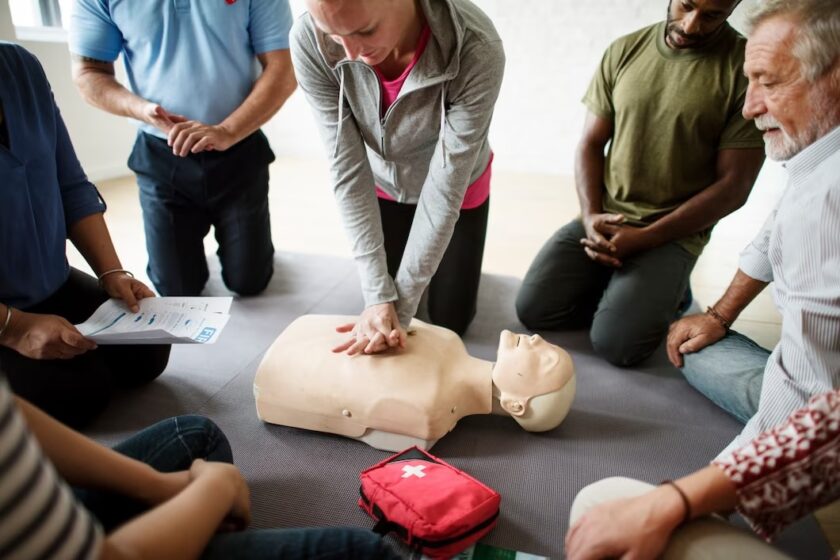
Community Health: The Lifesaving Art of First Aid
In the fabric of everyday life, the unexpected can weave a pattern of urgency and necessity, particularly when it comes to health crises. The ability to respond with swift, informed action can quite literally mean the difference between life and death.
This is the realm where first aid becomes not just a skill but a societal cornerstone. With an emphasis on community health goals, let us delve into the intricate tapestry of first aid, a subject both complex and fascinating.
The Anatomy of a First Aid Kit
A first aid kit is more than a box of plasters and bandages; it is a beacon of preparedness in a world filled with unforeseen events. Each item holds its own significance, a specific purpose for a particular type of wound or emergency. Understanding the composition of your first aid kit is akin to knowing the tools of a trade, and mastering their use requires both knowledge and practice through a course like the one offered with HLTAID011.
The Science Behind Bandaging Techniques
There is a subtle art to bandaging, a technique grounded in the sciences of anatomy and medicine. Whether it’s a compression bandage for sprains or a sterile dressing for open wounds, the method of application can significantly affect the healing process. It’s not just about covering up an injury; it’s about creating conditions that promote recovery and prevent further harm.
CPR: A Critical Lifeline
Cardiopulmonary resuscitation, commonly known as CPR, is a powerful ally in the fight to save lives in cardiac arrest situations. The rhythmic compression of the chest, interlaced with breaths, can keep the vital flow of oxygen circulating through the body. It’s a procedure that embodies the very essence of HLTAID011 education health initiatives: immediate, essential, and potentially life-sparing.
First Response to Burns
Burns, from the minor to the severe, are traumatic injuries that can occur in any setting. The first moments after a burn are pivotal; correct first aid can halt the damage and set the stage for healing. Knowing the degrees of burns and the corresponding treatments is paramount. From cool running water to the avoidance of common myths, the right response is a delicate balance of prompt action and gentle care.
Allergic Reactions and Anaphylaxis
Allergies are the body’s unpredictable sentinels, sometimes turning on us with little to no warning. Anaphylaxis, the most severe form, can escalate rapidly and requires swift first aid intervention. Administering an EpiPen or seeking emergency medical help could be the deciding factor in a life-threatening scenario. Understanding these allergic responses is a critical chapter in the book of first aid.
Summary
In our exploration of HLTAID011 first aid programs, we’ve traversed a landscape of emergency responses, each with its own contour and challenge. The tapestry of first aid is intricate and detailed, with each thread representing a different skill or piece of knowledge. The common thread, however, is the undeniable value that these skills provide. They empower us to be guardians in our communities, ready to act when the call arises.
In learning and applying these skills, we not only prepare ourselves to face potential emergencies but also become beacons of hope and safety in our circles. It’s a knowledge that, once gained, becomes a lifelong companion, invaluable and ever relevant.
In the pursuit of furthering our understanding, it’s beneficial to stay informed with current emergency health protocols. Staying abreast of these guidelines ensures that our actions in times of crisis are informed, relevant, and effective. First aid is not just about what we know but also about being connected to the evolving landscape of medical knowledge and practices.

